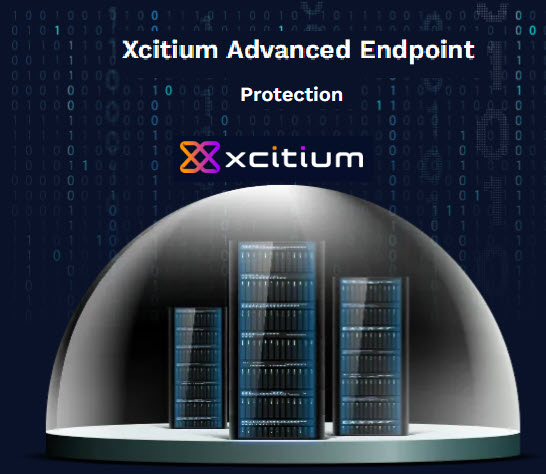
LockBit Ransomware – Crafting a Robust Defense Mechanism
LockBit Ransomware Crafting a Robust Defense Mechanism
LockBit, an infamous ransomware cartel, has risen as a formidable adversary to global enterprises. Their attack blueprint typically unfolds with intricate phishing schemes or social engineering gambits aimed at tricking users into engaging with harmful links or opening compromised files. Once the LockBit ransomware infiltrates a network, it rapidly encrypts essential files and systems, effectively hijacking them until a ransom is fulfilled. In a particularly malevolent maneuver, the syndicate often steals sensitive information, wielding the menace of public exposure to coerce victims into submission.
Zero Trust Architecture: Reinventing Security Protocols
In the face of mounting ransomware threats, the Zero Trust architecture is being heralded as a stalwart defensive strategy. Zero Trust revolutionizes conventional security paradigms by treating all users and devices as potential threats. It insists on stringent verification for every access request, both internal and external. This security overhaul is facilitated by:
- Robust Authentication: Multi-Factor Authentication (MFA) stands as a pillar of Zero Trust, mandating multiple verification methods to establish user identity, significantly curtailing unauthorized access risks.
- Micro-Segmentation: This strategy partitions the network into secure, manageable segments, drastically limiting ransomware’s ability to traverse laterally and escalate its impact.
- Principle of Least Privilege (POLP): By granting users the bare minimum access required for their roles, POLP curbs the potential damage radius of a successful attack.
- Data Protection: Zero Trust architectures prioritize data protection through encryption, access controls, and data loss prevention measures. This means that even if ransomware does encrypt files, the data may still be recoverable through backups or other means.
- Device Trust and Health Verification: Zero Trust requires devices to meet certain security standards before they can access network resources. This includes ensuring that endpoints have up-to-date security patches, antivirus software, and endpoint detection and response (EDR) tools.
- Network Monitoring and Visibility: Zero Trust solutions provide comprehensive visibility into network traffic and user activity. This helps security teams identify and investigate potential ransomware activity, enabling a faster and more effective response.
By implementing these principles and mechanisms, Zero Trust architecture creates a more secure and resilient environment that is less vulnerable to LockBit and other ransomware attacks. It reduces the attack surface, limits the impact of a successful attack, and provides the tools and visibility needed to detect and respond to threats quickly.
Xcitium AEP: Elevating Endpoint Defense

Xcitium’s Advanced Endpoint Protection (AEP) is engineered to counter LockBit’s advanced offensive. It harnesses behavioral analytics, machine learning, and signature-based detection to preempt and disarm ransomware threats. Key features include:
- Endpoint Containment: Xcitium AEP proficiently isolates compromised nodes, halting the ransomware’s advance.
- System Reversion: The platform can revert systems to their pre-attack state, nullifying ransomware modifications.
- Zero-Day Threat Shield: Xcitium AEP’s machine learning prowess enables it to detect and block emerging ransomware variants.
- Default Deny Platform: Focuses on complete enterprise visibility and ensures that endpoints remain malware-free by denying access to unknown or suspicious files by default.
- Threat Intelligence: Integrates with global threat intelligence feeds to stay updated on the latest malware trends and attack techniques.
- Forensic Analysis: Offers forensic analysis tools to investigate security incidents and determine the root cause of attacks.
- EDR: Xcitium EDR provides real-time threat detection, investigation, and response capabilities for endpoint devices like desktops, laptops, and servers. It goes beyond traditional antivirus solutions by actively monitoring endpoint activity, analyzing data, and identifying suspicious behavior that could indicate a potential attack.
- Stronger Security Posture: Enhances overall security posture by providing a layered defense against a wide range of threats.
- Patch Management: Inbuild Patch Managment to keep your software up to date
Neox Networks: Harnessing Network Observability for Proactive Defense
Neox Networks stands at the forefront of network observability, a critical component in detecting and thwarting LockBit attacks. Continuous monitoring and behavioral analysis empower Neox to spot irregularities and suspicious patterns indicative of a nascent ransomware assault. Its capabilities include:
- Real-Time Surveillance: Neox’s vigilant monitoring of network traffic aids in the early detection of malicious intent.
- Advanced Packet Processing Devices: Appliances that filter, aggregate, and manipulate network traffic for various purposes, such as load balancing and security filtering.
- Improve Network Operations: Streamline network management, reduce downtime, and optimize resource utilization.
- Network Forensic Analysis: Offers forensic analysis tools to investigate security incidents and determine the root cause of attacks
Here are some essential tips to protect yourself and your organization from ransomware attacks based on NIST:
Identify
- Asset Inventory
- Risk Assesment
- Impact Analysis
Protect
- Access Controls
- Data Backups
- Security Awareness Training
- Software Patching
- Network Segmentation
Detect
- Endpoint Detection and Response (EDR)
- Security Information and Event Management (SIEM)
- Threat Intelligence
Respond
- Incident Response Plan
- Communication Plan
- Cybersecurity Insurance
- Mitigation & Imrpvments
Recover
- Data Recovery
- Lessons Learned
Govern
- Cybersecurity Policies
- Risk Management
- Organizational Communication
Gardiyan – System Security
Gardiyan is a system operation management software that ensures safe monitoring and management in large working networks, informs system managers in line with corporate policies when necessary and ensures that the necessary measures are taken quickly by reporting the problems that occur with network, client and patch management software it comprises.
Conclusion
Waging war against ransomware collectives like LockBit demands a dynamic and layered defense strategy. Adopting a Zero Trust framework, implementing Xcitium AEP’s advanced endpoint protection, and utilizing Neox Network’s network observability are pivotal in cultivating a resilient security stance. When these state-of-the-art solutions are paired with proactive security measures and workforce cyber awareness initiatives, organizations can markedly mitigate their exposure to ransomware onslaughts and protect their vital resources.
Xcitium Web site: https://www.xcitium.com/
NEOX Networks : https://www.neox-networks.com/en/
WannaCry , click here




